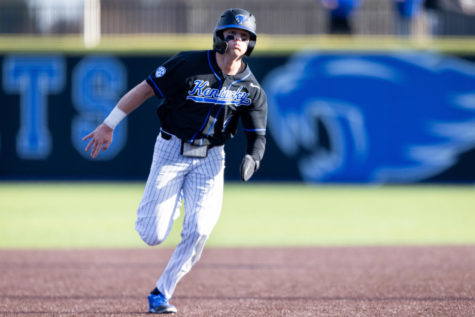Changes in season causes depression among students
January 26, 2011
By Joy Priest
This Monday was “Blue Monday,” a date that has been publicized as the most depressing day of the year, and this may be quite accurate considering the dreary winter day it fell on. It may also be related to the condition known as Seasonal Affective Disorder (SAD).
According to WebMD online, SAD is a category of depression that occurs in a person during the same season each year. It is more frequently associated with the winter months where natural light from the sun is limited due to shorter days. This affects natural sleep patterns and serotonin, a hormone that has a lot to do with one’s mood. The website also mentions that young people are diagnosed with SAD more often than older people, as the disease diagnoses decrease with age.
Lori Molenaar, APRN in the Student Behavioral Health department at UK, describes SAD as a clinical depression that is related to the quality and amount of full-spectrum light that hits the retina in a person’s eye.
“It’s a condition, usually in this part of the country, that will manifest from October and persist until about April and a little thereafter,” Molenaar said. “The retina doesn’t receive enough light, and so therefore doesn’t trigger the brain to release enough anti-depressant neurotransmitters.”
Treatment for SAD can be as simple as going outdoors more to expose the retina to more natural sunlight.
“Don’t wear sunglasses outdoors,” Molenaar said. “There are also phototherapy light boxes. We have them in town, they’re not extremely exotic. They have been around for 30 years. Grogan’s Medical supply carries them.” (See sidebar for details).
Molenaar is a subscriber to the light therapy option, which she explains can easily be done at home. After purchasing the phototherapy light box, one simply needs to sit under this light, approximately 18 inches away, for about 10 to 15 minutes every morning. Molenaar recommended only doing this in the morning because the light will affect a human’s natural circadian rhythm and give an energy boost for the day, which would keep you awake when you should be getting sufficient rest if done at night.
A second treatment option is making an appointment at the Student Behavioral Health Clinic to be seen by a physician who can prescribe anti-depressant medications.
“We would generally prescribe anti-depressants for six months to a year with Seasonal Affective Disorder, and it would be okay to start the meds in October and take them through April,” Molenaar said. “We don’t always go to medicine as the first option. There are life changes we encourage people to make and then if that doesn’t work we’ll go to medicine. It’s okay to combine the treatments as well.”
Corey Proffitt of Corey Proffitt Studios, Therapeutic Massage and Bodywork, offers a third treatment option called a Lomi Lomi massage for his SAD patients, which he has discovered to be extremely effective in treating symptoms of the disease.
Proffitt, a state-licensed ,nationally-certified graduate of the Asheville School of Advanced Bodywork in Asheville, North Carolina, describes Lomi Lomi as a traditional Hawaiian-style massage.
“This massage technique uses long, slow strokes from ankle to shoulder which improves circulation, lowers blood pressure and heart rate,” Proffitt said. “What I’ve been told by my clients, who tend to express a more seasonal depression, is it seems to give them an increased energy level and help them to sleep through the night.”
Proffitt wrote an article on Lomi Lomi which can be found on his website www.relaxyoudeserveit.com. The article described the Lomi Lomi massage as a technique that releases endorphins and leaves a person feeling more energized mentally and physically, resulting in improved thought and focus.
“Usually the affects can be felt immediately. I encourage my patients to get these massage treatments every two weeks and I definitely don’t recommend going more than a month,” Proffitt said.
Molenaar encouraged students to catch this form of clinical depression as early as possible to avoid issues that might interfere with fall finals and spring midterms.
“If you think something is wrong, come in and get an assessment so we can figure out how to help you,” Molenaar said.



















































































































































